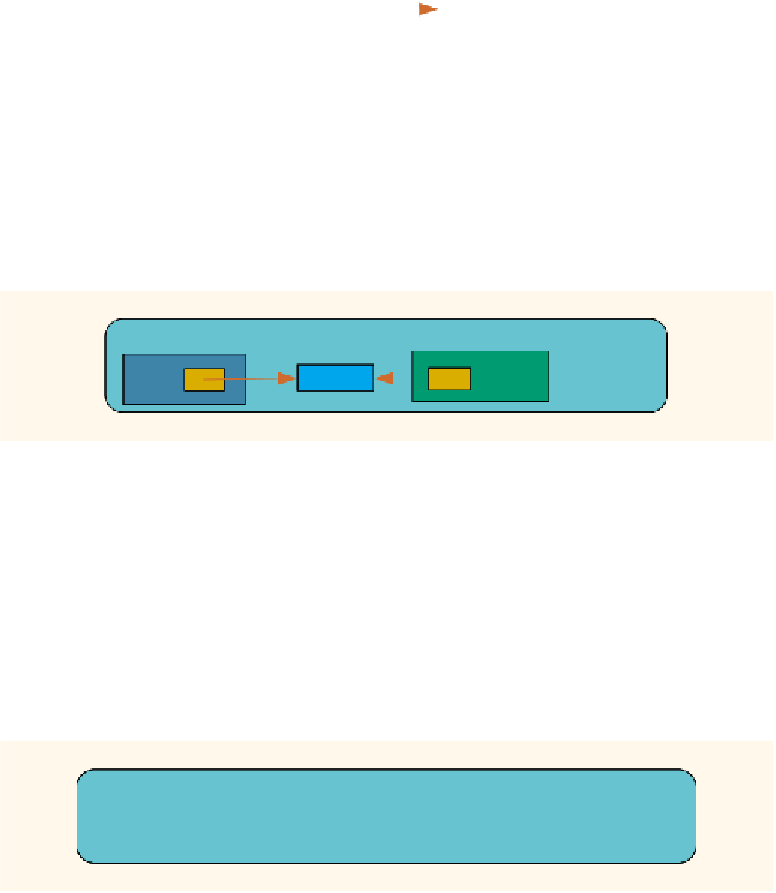Java Reference
In-Depth Information
The preceding program works as follows: The statement in Line 5 declares
str
to be a
reference variable of the
StringBuffer
type and assigns the string
"Hello"
to it (see
Figure 7-13).
main
str
Hello
FIGURE 7-13
Variable after the statement in Line 5 executes
The statement in Line 6 outputs the first line of output. The statement in Line 7 calls the
method
stringBufferParameter
. The actual parameter is
str
and the formal para-
meter is
pStr
. The value of
str
is copied into
pStr
. Because both of these parameters
are reference variables,
str
and
pStr
point to the same string, which is
"Hello"
(see
Figure 7-14).
stringBufferParameter
main
pStr
str
Hello
FIGURE 7-14
Variable before the statement in Line 7 executes
Then control is transferred to the method
stringBufferParameter
. The next state-
ment executed is in Line 12, which produces the second line of the output. The
statement in Line 13 produces the third line of the output. This statement also outputs
the string to which
pStr
points, and the printed value is that string. The statement in
Line 14 uses the method
append
to append the string
" There"
to the string pointed to
by
pStr
. After this statement executes,
pStr
points to the string
"Hello There"
.
However, this also changes the string that was assigned to the variable
str
. When the
statement in Line 14 executes,
str
points to the same string as
pStr
(see Figure 7-15).
stringBufferParameter
main
pStr
str
Hello There
FIGURE 7-15
Variable after the statement in Line 14 executes




Search WWH ::

Custom Search